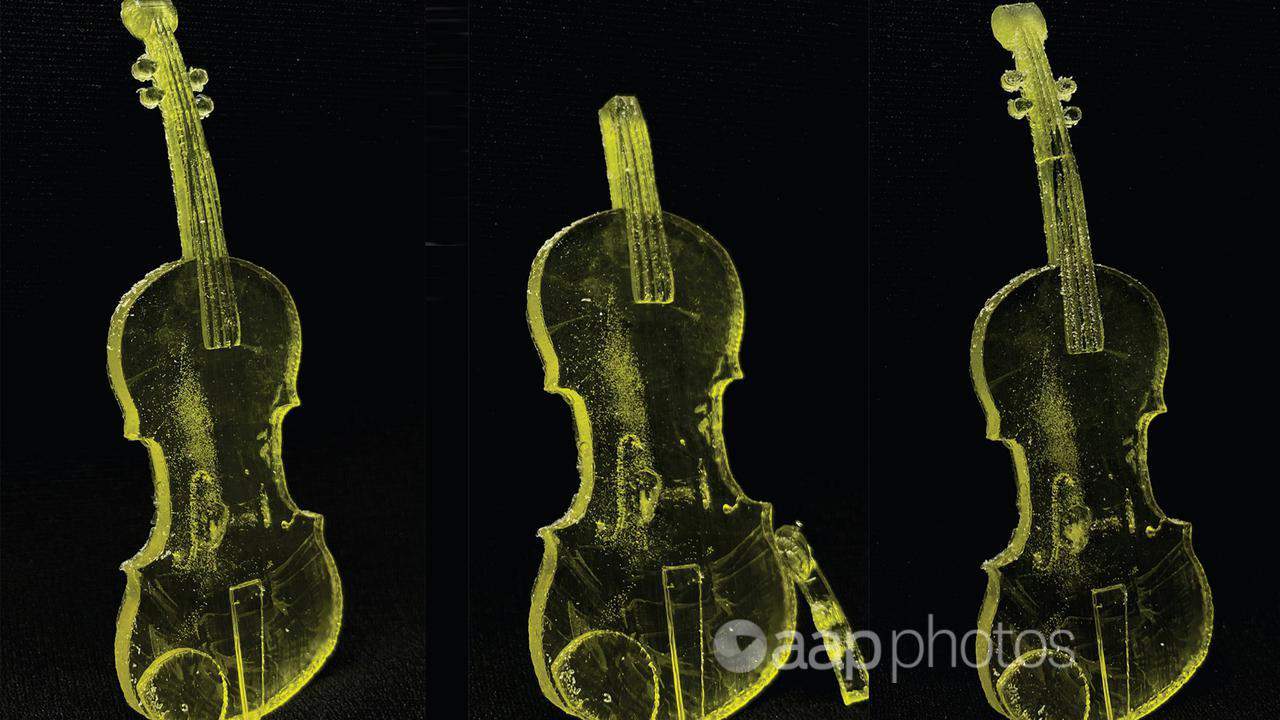Sydney scientists have demonstrated a way to help 3D printed plastic quickly and cheaply “heal itself” in a major commercial breakthrough. A special powder added to the liquid resin used in the printing process can assist with mending materials should they become damaged, University of NSW researchers have found.
The repairs can be done at room temperature and only need take place under LED lighting, which triggers a chemical reaction and the fusion of the fractured pieces.
Currently, achieving the same result can mean having to disassemble products and putting the broken components through a series of heating cycles.
It also requires about 24 hours to complete compared to an hour using the new method. While three-dimensional printing or additive manufacturing generally offers less impact on the environment, it doesn’t yet fit the strict definition of being eco-friendly.
With lots of plastic involved and printers that run for days on end, any delay caused by having to repair breakages has traditionally involved extra time, money and waste, says research team spokesman Dr Nathaniel Corrigan.
But now they can be easily and rapidly mended, and in many situations damaged components can also be salvaged instead of being thrown out to start over again.
“There is an obvious environmental benefit because you’re not having to re-synthesise a brand-new material every time it gets broken,” Dr Corrigan said.
“We are increasing the lifespan of these materials, which is going to reduce plastic waste.”
The powdered additive used is a trithiocarbonate or RAFT agent originally developed by the CSIRO.
It enables rearrangement of the network of elements that make up the printed material and allows them to be fused.
This occurs within about 30 minutes when UV LED lights are shone directly onto the broken plastic, with full “healing” taking place in roughly an hour.
Experiments, including on a 3D printed violin, show the self-repaired plastic’s strength is fully recovered to its original unbroken state.
The team believe commercialisation is possible given the simplification and speed of their system.
“There are other processes that do this but they rely on thermal chemistry to repair the material and typically it takes around 24 hours and multiple heating cycles to achieve the same type of result,” Dr Corrigan said.
“Another restriction is that you need an oven heated to high temperature and you obviously cannot repair the plastic material in situ – you would need to disassemble it from the component first which adds a level of complexity and delay.
“With our system, you can leave the broken plastic in place and shine the light on the entire component.
“In many places where you use a polymer material, you can use this technology,” he said.
Dr Corrigan and UNSW colleagues Cyrille Boyer and Michael Zhang believe the technology could be used in a range of applications where advanced 3D materials are used in high-tech specialised components.
These include wearable electronics, sensors and even some shoe manufacturing.


